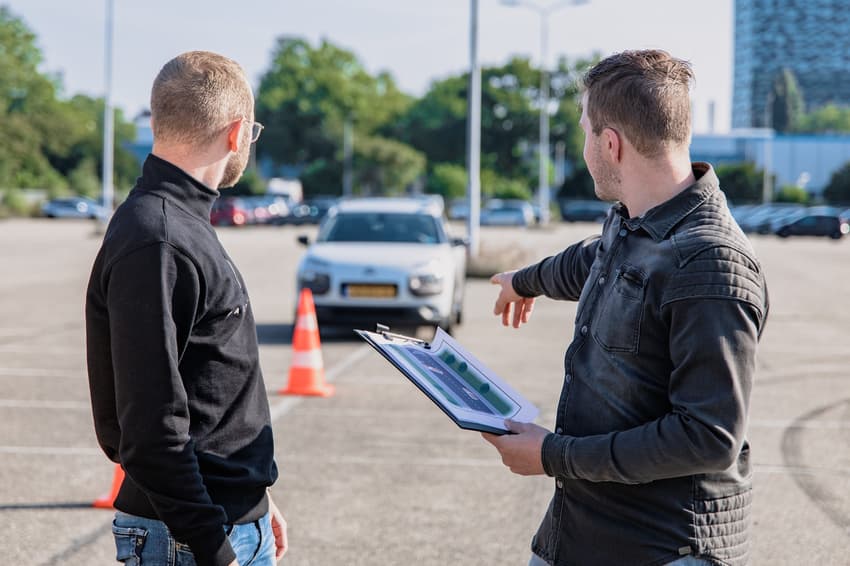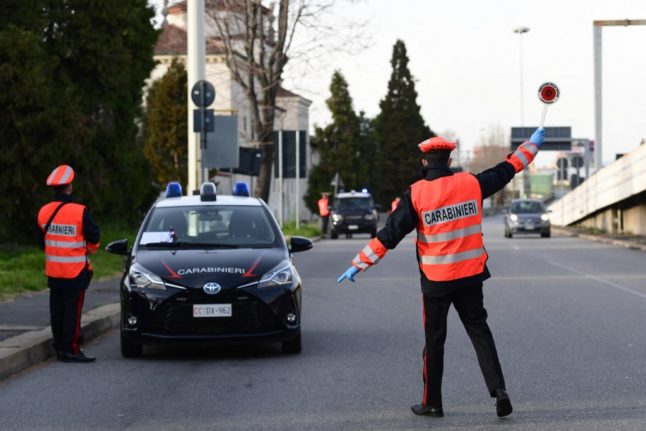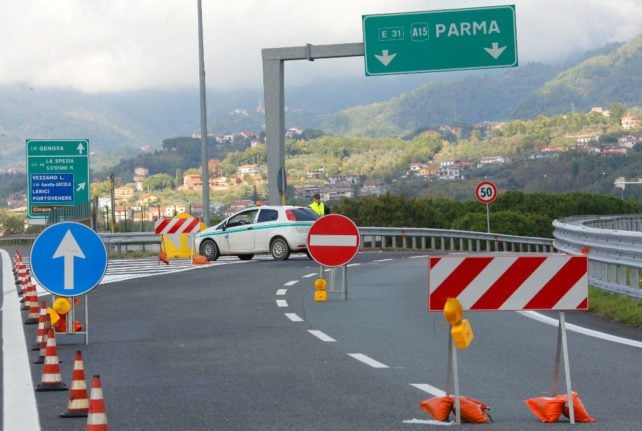Do you have to take Italy's driving test in Italian?

If you're planning on driving when you move to Italy, you may need to sit the Italian driving test. Here's what you need to know about the language aspect of taking your theory and practical driving exams in Italy.
One key part of life for many people making the move to Italy is ensuring they can continue to drive - especially for those who have decided to live in more remote areas with fewer public transport services.
If you’re a resident in Italy and want to drive on the nation’s roads, it’s mandatory to have an EU or Italian licence.
Note that visitors do not face this requirement, and those who have just moved to Italy will also able to drive using an existing licence - at first.
But once you're a resident in Italy, the clock starts ticking down on how long you may be able to use the driving licence you already own before needing to take an Italian driving test.
A handful of non-EU countries have reciprocal agreements with Italy in place, meaning drivers can convert their driving licences without the need to take the Italian driving test.
READ ALSO: Who needs to exchange their driving licence for an Italian one?
But most people moving to Italy from outside of Europe don't have this option, and instead have 12 months from registering residency (iscrizione anagrafica, which is when you register your Italian residence with your local Ufficio Anagrafe) to take and pass the Italian driving exams to get an Italian licence, known as the 'Patente B'.
This includes people with licences from the United States, Australia, New Zealand, Canada and - at least for now - the UK, as these countries don't have reciprocal driving licence agreements with Italy.
Many people have reported that a significant hurdle in achieving this is the Italian language requirement for both the theory and practical driving tests.
Can you request to take the Italian driving test in English?
There is some confusion around this as the rules changed a few years ago, but the short answer is no.
"The exam can be taken in Italy only in the Italian language and, upon specific request, in German and French," confirmed ILC & Associates Law Firm to The Local.
"Previously this was different - that is, it could also be taken in English. But in 2012, Italy implemented EU legislation under which, in EU countries, the driving test had to be taken in the language of the country in which the test is taken.
"The only exceptions in Italy for the French and German languages were provided to meet the needs of linguistic minorities in Italy, namely the bilingualisms of regions Valle d'Aosta and Trentino Alto-Adige," a represantative of the legal firm added.
READ ALSO: How do you take your driving test in Italy?

You'll need to get an Italian driving licence to legally drive on Italy's roads. (Photo by Miguel MEDINA / AFP)
The ruling isn't part of the Italian Constitution, which protects all minorities - "but an EU regulation that unfortunately represents a source of original law and therefore must be transposed directly by the government and in our case by the Ministry of Transport," the legal experts clarified.
How difficult is it to take the test in Italian?
While some who've done it say the Italian driving test is “not as difficult as it sounds”, others have found the language barrier to be the reason they were unable to pass.
“My question is why can’t you take your driving test in English? Adding it as an option for taking the test would help,” says Njideka Nwachukwu, who moved to Italy in 2019. She failed the theory test and has to try again, at a further cost.
If you've just moved to Italy with a low level of fluency, this could mean just as much a course in Italian as road safety - especially as the theory test is renowned for being technical and the multiple choice questions are said to be linguistically tricky, even for Italians.
US citizen Jed Smith told us he studied the Driver’s Manual for six months before taking the theory test, because he was new to Italy and so the language in itself was a hurdle.
READ ALSO: Getting your Italian driving licence: the language you need to pass your test
But even those who are confident about their general Italian language skills have told The Local that, despite their proficiency, the Italian driving test is source of concern.
"I can speak Italian, so, fingers crossed I should be okay with the theory test," UK citizen David Kevin Tickle told us.
"However, it is written using precise vocabulary and requires knowledge of Italian to a high standard.
"If your Italian is anything less, then this becomes a severe language test; it tests your ability to read and understand Italian, and your knowledge of the Highway Code will not stand a chance.
"It should at the very least be available in an appropriate form for speakers of other first languages," he added.
Rebecca Ann Hughes, a British freelance journalist living in Italy, said she also found the terminology "technical and formal", even though she already had a good grounding of Italian to begin with.

You can't take the Italian driving test in English, even on request. (Photo by FABIO MUZZI / AFP)
Areas to read up on in your language revision are terms for engine parts, load limits for different vehicles and car tyre treads.
Candidates will need to take 30 true or false questions, of which you can only get three wrong for a pass.
It's worth bearing in mind you have two shots at the theory within a six-month period, after which you'll receive the ‘foglia rosa’, the pink slip.
This is a permit that allows you to proceed to the practical test, for which you can have three attempts in an 11-month period, according to the latest government guidance.
How can I prepare for the Italian driving test language?
One route is to go to an Italian driving school (autoscuola), who will not only help with all the paperwork of getting your Italian driving licence, but will also train you in the theory questions.
Once you consistently pass the practice tests, they'll submit you for the theory exam.
To bolster these classroom sessions, you can revise in your own time by practising online and by studying the Italian Driver’s Manual. Here are some useful sites to help you prepare:
Once you've jumped over this hurdle, you'll need to complete six hours of practical driving lessons and take the practical test in Italian.
To revise for the language you'll need for that, see our guide here.
For more information on driving in Italy, check the Italian government’s page on steps to obtain a Patente B.
Comments (3)
See Also
One key part of life for many people making the move to Italy is ensuring they can continue to drive - especially for those who have decided to live in more remote areas with fewer public transport services.
If you’re a resident in Italy and want to drive on the nation’s roads, it’s mandatory to have an EU or Italian licence.
Note that visitors do not face this requirement, and those who have just moved to Italy will also able to drive using an existing licence - at first.
But once you're a resident in Italy, the clock starts ticking down on how long you may be able to use the driving licence you already own before needing to take an Italian driving test.
A handful of non-EU countries have reciprocal agreements with Italy in place, meaning drivers can convert their driving licences without the need to take the Italian driving test.
READ ALSO: Who needs to exchange their driving licence for an Italian one?
But most people moving to Italy from outside of Europe don't have this option, and instead have 12 months from registering residency (iscrizione anagrafica, which is when you register your Italian residence with your local Ufficio Anagrafe) to take and pass the Italian driving exams to get an Italian licence, known as the 'Patente B'.
This includes people with licences from the United States, Australia, New Zealand, Canada and - at least for now - the UK, as these countries don't have reciprocal driving licence agreements with Italy.
Many people have reported that a significant hurdle in achieving this is the Italian language requirement for both the theory and practical driving tests.
Can you request to take the Italian driving test in English?
There is some confusion around this as the rules changed a few years ago, but the short answer is no.
"The exam can be taken in Italy only in the Italian language and, upon specific request, in German and French," confirmed ILC & Associates Law Firm to The Local.
"Previously this was different - that is, it could also be taken in English. But in 2012, Italy implemented EU legislation under which, in EU countries, the driving test had to be taken in the language of the country in which the test is taken.
"The only exceptions in Italy for the French and German languages were provided to meet the needs of linguistic minorities in Italy, namely the bilingualisms of regions Valle d'Aosta and Trentino Alto-Adige," a represantative of the legal firm added.
READ ALSO: How do you take your driving test in Italy?

The ruling isn't part of the Italian Constitution, which protects all minorities - "but an EU regulation that unfortunately represents a source of original law and therefore must be transposed directly by the government and in our case by the Ministry of Transport," the legal experts clarified.
How difficult is it to take the test in Italian?
While some who've done it say the Italian driving test is “not as difficult as it sounds”, others have found the language barrier to be the reason they were unable to pass.
“My question is why can’t you take your driving test in English? Adding it as an option for taking the test would help,” says Njideka Nwachukwu, who moved to Italy in 2019. She failed the theory test and has to try again, at a further cost.
If you've just moved to Italy with a low level of fluency, this could mean just as much a course in Italian as road safety - especially as the theory test is renowned for being technical and the multiple choice questions are said to be linguistically tricky, even for Italians.
US citizen Jed Smith told us he studied the Driver’s Manual for six months before taking the theory test, because he was new to Italy and so the language in itself was a hurdle.
READ ALSO: Getting your Italian driving licence: the language you need to pass your test
But even those who are confident about their general Italian language skills have told The Local that, despite their proficiency, the Italian driving test is source of concern.
"I can speak Italian, so, fingers crossed I should be okay with the theory test," UK citizen David Kevin Tickle told us.
"However, it is written using precise vocabulary and requires knowledge of Italian to a high standard.
"If your Italian is anything less, then this becomes a severe language test; it tests your ability to read and understand Italian, and your knowledge of the Highway Code will not stand a chance.
"It should at the very least be available in an appropriate form for speakers of other first languages," he added.
Rebecca Ann Hughes, a British freelance journalist living in Italy, said she also found the terminology "technical and formal", even though she already had a good grounding of Italian to begin with.

Areas to read up on in your language revision are terms for engine parts, load limits for different vehicles and car tyre treads.
Candidates will need to take 30 true or false questions, of which you can only get three wrong for a pass.
It's worth bearing in mind you have two shots at the theory within a six-month period, after which you'll receive the ‘foglia rosa’, the pink slip.
This is a permit that allows you to proceed to the practical test, for which you can have three attempts in an 11-month period, according to the latest government guidance.
How can I prepare for the Italian driving test language?
One route is to go to an Italian driving school (autoscuola), who will not only help with all the paperwork of getting your Italian driving licence, but will also train you in the theory questions.
Once you consistently pass the practice tests, they'll submit you for the theory exam.
To bolster these classroom sessions, you can revise in your own time by practising online and by studying the Italian Driver’s Manual. Here are some useful sites to help you prepare:
Once you've jumped over this hurdle, you'll need to complete six hours of practical driving lessons and take the practical test in Italian.
To revise for the language you'll need for that, see our guide here.
For more information on driving in Italy, check the Italian government’s page on steps to obtain a Patente B.
Join the conversation in our comments section below. Share your own views and experience and if you have a question or suggestion for our journalists then email us at [email protected].
Please keep comments civil, constructive and on topic – and make sure to read our terms of use before getting involved.
Please log in here to leave a comment.